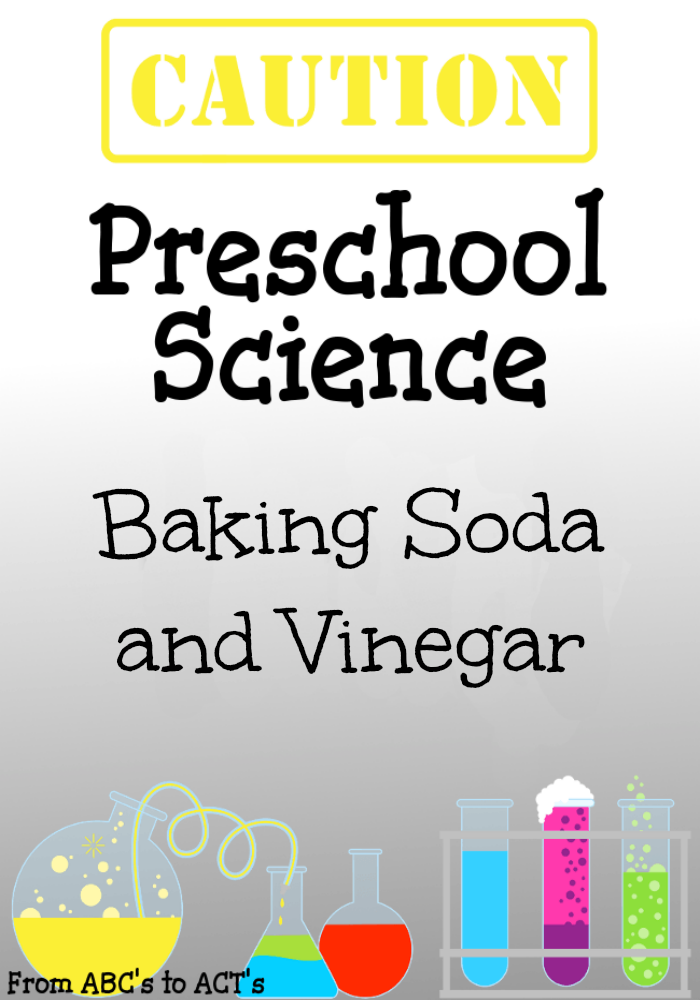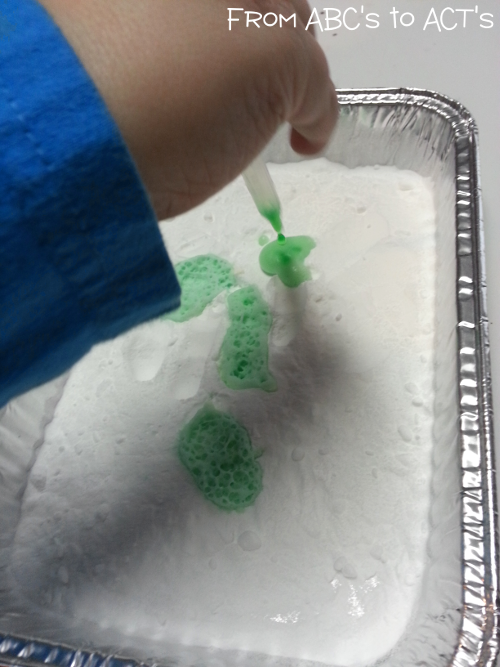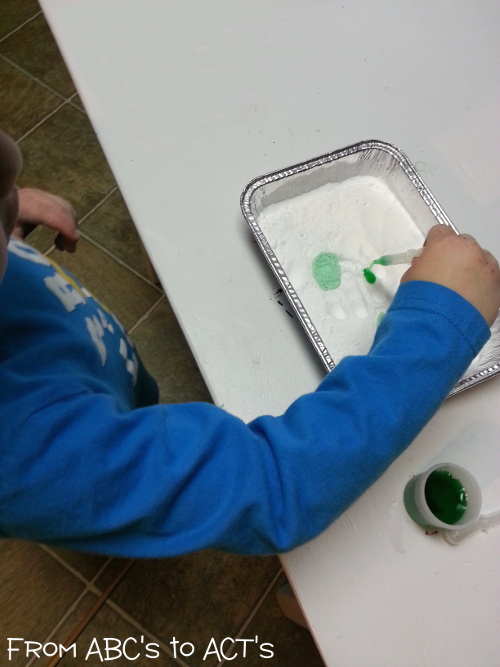This post may contain affiliate links. For more information, please see my full disclosure policy.
I think we may have found Nicholas’ favorite science experiment.
He has always been incredibly curious, always wanting to see how things work, how he can change them.
To say that this activity appeased his curious little nature for a bit would be a serious understatement.
The second we mixed the baking soda and vinegar and saw the reaction, he started squealing “bubbles” and I knew he was hooked.

The best part is that you probably already have everything you need hanging out in your kitchen!
Just grab a pan and add baking soda. You could use a cookie sheet or even a baking dish! We had a few aluminum pans left over from the holidays so we grabbed one of those.
For the vinegar, we decided to mix things up a bit and added a little green food coloring to celebrate the upcoming St. Patrick’s Day :)
You’ll need a way to transfer the vinegar to your pan. You can either use plastic pipettes like those in the picture above or eye/medicine droppers found in the pharmacy department.
It only took me showing him twice how to use the pipette before he was off and running on his own.
Not only does this activity introduce your toddler to chemical reactions (which they just see as bubbles) and get their little minds working over time but it’s also a fun way to build those fine motor skills.
More than anything, I love how this activity brought out his curious side. Within just a few minutes of my showing him how to use the pipettes, he moved on to test out his own ideas.
He added a little bit of the baking soda to the vinegar cup and we watched that fizz and bubble and then decided that that just wasn’t big enough for him and dumped the entire cup of vinegar into the pan. My ears are still ringing from the squealing and laughing :)
If you want to see a toddler get really excited over science, give it a try! You won’t be disappointed!


